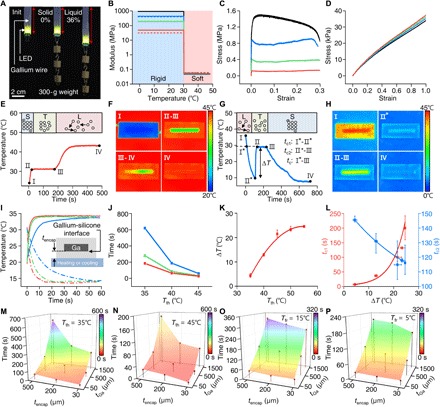Fig. 2. Thermomechanical studies of the phase transition characteristics of the gallium-based transformative platform.

(A) Images comparing the mechanical characteristics of a transformative LED device in a rigid (solid gallium) and soft (liquid gallium) state, powered through conductive gallium wires, when applied with a uniaxial strain by 300-g weights. (B to D) Effective elastic moduli (B) and stress-strain curves (C and D) of testbed platforms in the rigid (C) and soft state (D). Red, green, blue, and black lines in the plots indicate a testbed platform with the gallium thickness of 50, 320, 640, and 1500 μm, respectively. In all samples, the width of gallium frame is 790 μm, and the encapsulating polymer has dimensions of 5.81 mm (w) by 2.12 mm (t) (see fig. S2). The solid and dashed lines in (B) represent experimental data and theoretically calculated values, respectively. (E and F) Plot illustrating the phase transition of gallium-based transformative platform as it is thawed with a temperature of 45°C (E) and associated IR images at phases I, II-III, III-IV, and IV (F). The thawing process is divided into three phases: I-II, solid; II-III, solid-liquid transition; and III-IV, liquid. (G and H) Plot illustrating the phase transition of the gallium-based transformative platform during freezing with an applied temperature of 5°C (G) and the corresponding IR images at phases I, II*, II-III, and IV (H). The freezing process is divided into four phases: I-I*, liquid; I*-II*, supercooled liquid; II*-III, liquid-solid transition; and III-IV, solid. II* indicates a nucleation temperature. (I) Temperature changes at the gallium-silicone interface induced by the thawing (35°C; solid lines) and freezing temperatures (15°C; dashed lines) applied through different thicknesses of silicone encapsulants (red, 30 μm; green, 200 μm; and blue, 500 μm). (J) Time required for phase transition [i.e., duration for II-III in (E)] as a function of thawing temperature (Tth) for testbed platforms made with a 1.5-mm-thick gallium frame encapsulated in 30-μm-thick (red), 200-μm-thick (green), and 500-μm-thick (blue) silicone. (K) Degree of supercooling (∆T) of gallium as a function of Tth. (L) Characteristic time for gallium to reach the nucleation temperature (tc1) and time required for the phase transition (tc2) as a function of ∆T during the freezing process in (G). (M and N) Time required to switch the transformative platforms (gallium thickness, 50, 500, and 1500 μm; silicone encapsulant thickness, 30, 200, and 500 μm) from the rigid to soft state when applying Tth of 35°C (M) and 45°C (N). (O and P) Characteristic transition time (tc) for the transformative platform used in (M) and (N) to transform from the soft to rigid state when applying freezing temperatures (Tfr) of 15°C (O) and 5°C (P). Note that the soft-state platform in (O) and (N) was prepared by applying Tth of 35°C for 20 min before measuring tc in freezing.
